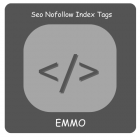What is Keyword Difficulty and How Do You Measure It?

What is Keyword Difficulty and How Do You Measure It?
Table of Contents
- Understanding Keyword Difficulty: Definition and Importance
- Factors Influencing Keyword Difficulty
- How to Measure Keyword Difficulty: Tools and Techniques
- Interpreting Keyword Difficulty Scores: What They Mean for Your Strategy
- The Role of Competition in Keyword Difficulty
- Strategies for Targeting High-Difficulty Keywords
- Balancing Keyword Difficulty with Search Intent
Understanding Keyword Difficulty: Definition and Importance
Keyword difficulty refers to how challenging it is to rank for a specific keyword in search engine results. It’s a critical metric in SEO that helps marketers and website owners identify which keywords to target based on their competition and content quality. Understanding keyword difficulty is important because it allows you to prioritize your SEO efforts, allocate resources effectively, and strategize your content marketing. By focusing on keywords with manageable difficulty, you increase your chances of achieving higher rankings, driving traffic, and ultimately converting visitors into customers.
Factors Influencing Keyword Difficulty
Several factors contribute to keyword difficulty, including: Competition Level: The number of websites actively targeting the same keyword can make it harder to rank. Content Quality: High-quality, authoritative content tends to rank better. If many competitors provide valuable information on the same topic, the difficulty increases. Domain Authority: Websites with higher domain authority often outrank those with lower authority for the same keywords. Backlinks: The number and quality of backlinks to a webpage can significantly influence its ability to rank. Search Intent: Understanding the user’s search intent can impact keyword difficulty, as keywords that satisfy user needs effectively can dominate rankings.
Tip
If you offer your SEO texts in several languages or localize them for different regions, your pages may be incorrectly classified as duplicate content. However, there is a simple solution to this in the form of hreflang. Our article explains what you need to bear in mind when using hreflang.
Read more about hreflangHow to Measure Keyword Difficulty: Tools and Techniques
CMeasuring keyword difficulty involves using various SEO tools that provide scores based on the competition for specific keywords. Popular tools include: SEMrush: Offers a Keyword Difficulty tool that scores keywords based on competition and organic search volume. Ahrefs: Provides a Keyword Difficulty metric based on the backlinks and authority of the top-ranking pages for that keyword. Moz: Features a Keyword Difficulty score that considers the strength of the top-ranking domains. Ubersuggest: Offers insights into keyword difficulty along with suggestions for alternative keywords. These tools typically use different algorithms, so it’s essential to understand their methodologies when interpreting the results.
Interpreting Keyword Difficulty Scores: What They Mean for Your Strategy
Keyword difficulty scores usually range from 0 to 100, with higher scores indicating greater difficulty. Here’s how to interpret these scores: 0-30 (Easy): Keywords in this range are generally easier to rank for, making them ideal for new or smaller websites. 31-60 (Medium): These keywords require more effort and quality content but are achievable for established websites. 61-100 (Hard): Highly competitive keywords demand significant resources, high-quality backlinks, and established domain authority to rank effectively. When developing your SEO strategy, focus on a mix of easy and medium-difficulty keywords while considering long-tail variations that may have lower competition.
The Role of Competition in Keyword Difficulty
Competition plays a significant role in determining keyword difficulty. If many websites compete for the same keyword, the difficulty level increases. It’s essential to analyze competitors’ content, backlinks, and overall authority. Conducting a competitive analysis can help you identify gaps in your content strategy. Consider targeting less competitive long-tail keywords or niche topics that are still relevant to your audience. This approach can lead to higher rankings and increased visibility, especially for newer websites.
Strategies for Targeting High-Difficulty Keywords
Targeting high-difficulty keywords can be challenging but not impossible. Here are some strategies to improve your chances of success: Create High-Quality Content: Develop in-depth, valuable content that addresses user intent and provides solutions. Build Backlinks: Focus on acquiring high-quality backlinks from authoritative websites to boost your site’s credibility. Optimize On-Page SEO: Ensure that your content is well-optimized for the target keyword, including meta tags, headings, and internal links. Leverage Social Media: Promote your content on social media platforms to increase visibility and drive traffic, potentially earning more backlinks. Engage in Content Marketing: Consider creating various content types, such as videos, infographics, and podcasts, to diversify your audience reach.
Balancing Keyword Difficulty with Search Intent
Balancing keyword difficulty with search intent is crucial for effective SEO. While it’s important to consider how difficult it may be to rank for a keyword, understanding what users are searching for is equally vital. Focus on keywords that align with user intent—whether it’s informational, navigational, or transactional. By creating content that satisfies user needs, you can improve engagement, reduce bounce rates, and increase conversions, regardless of keyword difficulty. Targeting a mix of keywords that align with user intent and varying difficulty levels will create a more holistic SEO strategy.
| What is Keyword Difficulty and How Do You Measure It? | |
|---|---|
| Understanding Keyword Difficulty: Definition and Importance | Keyword difficulty measures the level of competition for a keyword in search engine rankings, guiding SEO strategies to ensure effective keyword targeting. |
| Factors Influencing Keyword Difficulty | Factors include the number of competing pages, the authority of those pages, quality of content, and the relevance of backlinks, all impacting ranking potential. |
| How to Measure Keyword Difficulty: Tools and Techniques | Popular tools like SEMrush, Ahrefs, and Moz provide keyword difficulty scores based on data analysis, helping marketers identify strategic opportunities. |
| Interpreting Keyword Difficulty Scores: What They Mean for Your Strategy | Scores typically range from easy (0-30) to hard (61-100), indicating the potential challenges in ranking. Lower scores are easier to target for quick wins. |
| The Role of Competition in Keyword Difficulty | High competition indicates a saturated market, making it vital to analyze competitor strategies to find niches or long-tail keywords that are less competitive. |
| Strategies for Targeting High-Difficulty Keywords | Enhance your content quality, build robust backlink profiles, and utilize content marketing strategies to improve visibility and competitiveness in challenging niches. |
| Balancing Keyword Difficulty with Search Intent | Align your keyword strategy with user intent by targeting relevant keywords that match searchers' needs, ensuring that content is valuable and satisfying. |
FAQs
What is Keyword Difficulty and Why is it Important?
Keyword difficulty measures how challenging it is to rank for a specific keyword in search engine results. It helps marketers prioritize their SEO efforts, allocate resources effectively, and strategize content marketing, increasing the chances of achieving higher rankings and driving traffic.
What Factors Influence Keyword Difficulty?
Several factors contribute to keyword difficulty, including competition level, content quality, domain authority, backlinks, and user search intent. High competition and quality content from established websites make it harder to rank for certain keywords.
How Can I Measure Keyword Difficulty?
Keyword difficulty can be measured using various SEO tools, such as SEMrush, Ahrefs, Moz, and Ubersuggest. These tools provide scores based on competition, backlinks, and the authority of top-ranking pages, helping you evaluate the feasibility of targeting specific keywords.
What Do Keyword Difficulty Scores Mean?
Keyword difficulty scores range from 0 to 100. Scores from 0-30 are easy to rank for, 31-60 are medium difficulty, and 61-100 are hard. Understanding these scores helps in developing a balanced SEO strategy that includes a mix of easy and medium-difficulty keywords.
How Does Competition Impact Keyword Difficulty?
High competition for a keyword increases its difficulty. Analyzing competitors' content, backlinks, and authority helps identify gaps in your strategy, allowing you to target less competitive long-tail keywords or niche topics for better visibility.
What Strategies Can I Use for Targeting High-Difficulty Keywords?
To target high-difficulty keywords successfully, create high-quality content, build authoritative backlinks, optimize on-page SEO, promote content on social media, and diversify your content marketing strategies to reach a broader audience.
How Can I Balance Keyword Difficulty with Search Intent?
Balancing keyword difficulty with search intent is crucial. Focus on keywords that match user intent—informational, navigational, or transactional—while also considering difficulty. This strategy improves engagement, reduces bounce rates, and increases conversions.










